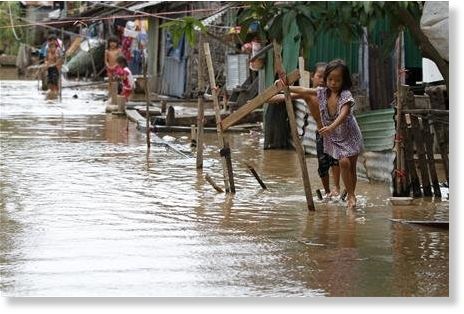Several Asian countries reeling under floods after some of wildest weather this summer 
© Romeo Ranoco / ReutersA policeman keeps watch as residents wade through floodwater brought by Typhoon Nesat and wait for rescue workers in Candaba, Pampanga province, north of Manila on Friday.
A tropical storm barreled toward Vietnam Friday, forcing 20,000 people to be evacuated, as the Philippines braced for a new typhoon and several Asian countries reeled under floods after some of the wildest weather this summer.
Prolonged monsoon flooding, typhoons and storms have wreaked untold havoc in the region, leaving more than 600 people dead or missing in India, Thailand, Philippines, Japan, China, Pakistan and Vietnam in the last four months. In India alone, the damage is estimated to be worth $1 billion, with the worst-hit Orissa state accounting for $726 million.
The state-run Indian Institute of Tropical Meteorology said several studies suggest an intensification of the Asian summer monsoon rainfall with increased atmospheric carbon dioxide concentrations. Still, it is not clear that this is entirely because of climate change, especially in India, it said.
After pummeling the Philippines and China this week, Typhoon Nesat was downgraded to tropical storm as it headed toward Vietnam where it was expected to make landfall later Friday with sustained wind speeds of up to 73 mph, according to the national weather forecasting center.

